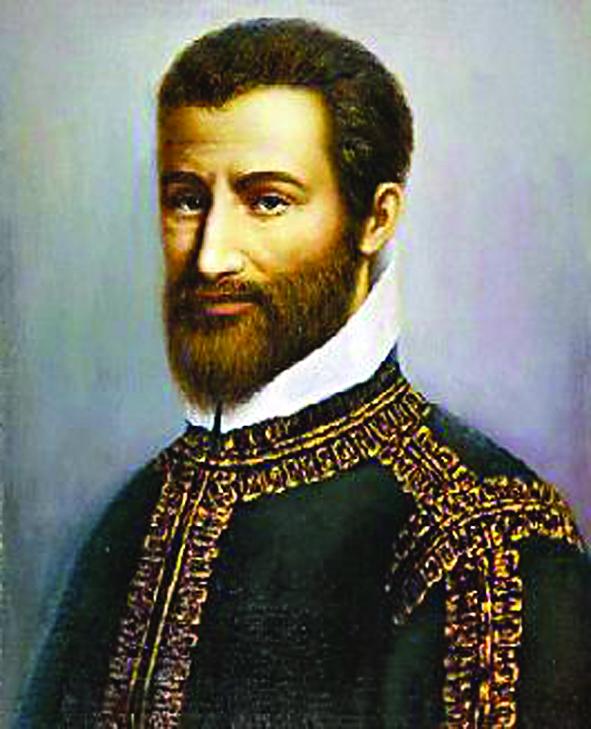To celebrate 2015’s “World Environment Day” on June 3, the International Fund for Agricultural Development (IFAD) partnered with Italian celebrity chef, Carlo Cracco, to bring attention to the negative impact of climate change on many of the world’s traditional foods, especially in developing countries. Famous for his truffle dishes at his two-Michelin-starred Milanese restaurant, named “Cracco” after himself, last March Chef Cracco visited the Highlands of Eastern Morocco for two days. (In February 2014 he’d opened a second, but simpler, restaurant, “Carlo e Camilla in segheria” in the Milanese neighborhood “Navigli”).

Marco Bonifaz in Bolivia
On a tour of sites where truffles once thrived, IFAD farming experts explained to Cracco, a disciple of the world-famous chefs Gualtiero Marchesi, Alain Ducasse, and Annie Féolde as well as a judge of Italy’s TV program “Masterchef,” how overgrazing and climate change are contributing to land degradation, causing desertification, drought, and prolonged hot and cold weather. While there, Cracco starred in an episode of “Recipes for Change,” which shows him cooking a traditional lamb and truffle tagine with local small-scale farmer Fatima Abed.
“Coming here has been a humbling experience,” remarked Cracco, who is certainly not known for his humility. “If you let it, the desert will continue to advance. Therefore it’s essential to help the people who live here to recuperate their land so they won’t be forced to move away. They need to become food secure once again.”
“In 2015 we at IFAD made six ‘Recipes for Change’ videos with five other well-known chefs besides Cracco,” Brian Thomson, Communication and Advocacy Manager, told me this summer. “All are aimed at a general audience and dubbed into English, French, Italian, and Spanish. We want to encourage people who consult our website, www.ifad.org, be they private individuals, small farmers or government officials, to join the ‘Recipes for Change’ community.”

Carlo Cracco and Fatima Abed in Morocco
If you Google “Recipes for Change” and then click on each of the six individual case studies, you can read about the reasons for the threatened environments and IFAD’s interventions to help the local populations, watch the video, and home-test IFAD’s local recipe, some of whose ingredients have been adapted to what’s available in developed countries. For example, potatoes and parsnips have been substituted here for truffles, which cost a fortune in the developed world.
“We plan to ask our ‘members’ to sign a petition that asks governments participating in the climate change congress, which will take place in Paris this December, to put more funding aside to help smallholder farmers in developing countries to adapt to climate change,” Thomson said. “We can’t stop climate change, but we can slow it down.”
Three videos besides Cracco’s were produced first. One stars Australian-born Bjorn Shen, a well-known chef from Singapore, where he is the owner of the Middle-Eastern inspired restaurant “Artichoke” and the author of Artichoke Recipes and Stories from Singapore’s Rebellious Kitchen. Shen went to the Mekong Delta in Vietnam, where the rising level of the sea is contaminating the fresh water and killing off its freshwater shrimp and catfish. Another film shows Ali Mandhry, considered one of Africa’s top chefs, cooking Ibitoke na Ibishimbo or bananas with kidney beans and split greens in Rwanda, where increasing temperatures have damaged its two cropping seasons of sorghum, bananas, beans, sweet potatoes, and cassava. Mandhry is the star chef on Kenyan TV of the weekly program, “Kenyan Cuisine with a Twist.” The third shows Bolivian chef Marco Bonifaz, owner of “Flanigan’s Cave Gourmet” in La Paz, in his home country, where the some 700 varieties of potatoes are under threat from rising temperatures and changing growing seasons. His dish here is “Chairo,” a typically Andean potato-based dish.
The next two videos show prize-winning chef Ska Moteane, who won Gourmand’s 2012 award of Best African Cookbook, in her home country of Lesotho, cooking “Sechu Sa Nka” (Mutton Stew) and TV chef Ba Alpine from Senegal, also in her home country, preparing “Poulet Yassa,” Rising temperatures and frequent droughts threaten Lesotho’s economy, dominated by livestock production and its export of wool and mohair. In Senegal, rising sea levels have increased the levels of salt in the soil, and erratic rainfall and weather patterns are making it increasingly difficult to farm Senegal’s staples: rice and onions.

Bjorn Shen in Vietnam




Facebook Comments